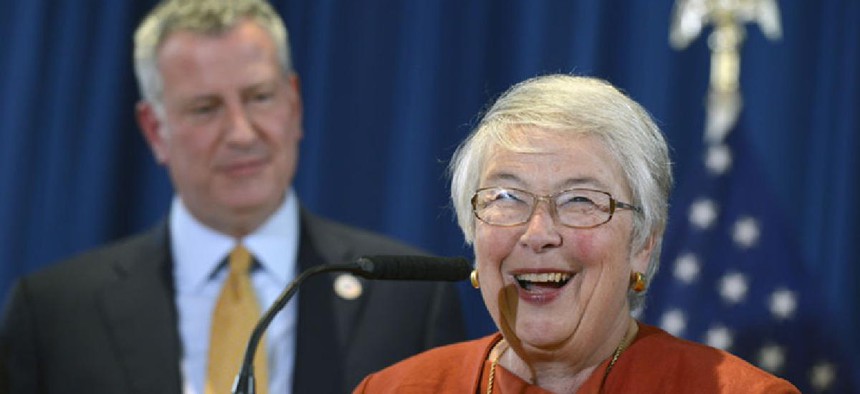Carmen Fariña is stepping down as the head of the nation’s largest school district, according to an official briefed on her plans.
Fariña has led the education department since 2014, when the city’s new mayor, Bill de Blasio, plucked her from retirement. The appointment marked the culmination of a 50-year career in the school system, where she rose from classroom teacher to principal and finally to schools chancellor.
As chancellor, Fariña worked to change the tone of the department, earning the loyalty of some teachers and principals eager for support after three tumultuous terms under de Blasio’s predecessor, Michael Bloomberg. Her plans were first reported by Politico.
She also presided over a large expansion of free prekindergarten, new efforts to help poor students with the challenges they face in school, and increased prominence for the department’s efforts to improve instruction.
Fariña offered no comment after tonight’s meeting of the Panel for Educational Policy, the city’s school board. She is reportedly planning to leave in early 2018.
RELATED: Could Félix V. Matos Rodríguez replace Carmen Fariña?
Here are some highlights of Fariña’s tenure:
- Overall, the city’s scores on annual state exams and its high-school graduation rate have steadily inched up during her tenure, building on gains made during the previous administration.
- Her focus on improving conditions for educators — and de Blasio close ties with the city’s unions — helped foster a tight relationship between the city’s large and powerful teachers union and the education department, after years of feuding under Bloomberg. At the start of her tenure, the city negotiated a new contract with the union that included pay hikes for teachers and more time for professional development.
- Fariña oversaw the school system as it added tens of thousands of new pre-K seats for four-year-olds, a change spearheaded by City Hall but largely implemented from within the education department.
- She re-engineered the city’s largely invisible, but highly influential, school support bureaucracy that works directly with principals, replacing dispersed “networks” with geographic centers. At the centerpiece of her reorganization were superintendents, whom she reinvested with broad authority to carry out her mandates.
- She managed a sweeping program to improve the city’s lowest-performing schools, which partnered schools with community organizations and sent them extra funding. A key portion of that program culminated with a set of school closures — and “graduations” for schools that improved — announced this week. In sharp contrast to the success of universal pre-K, the so-called “Renewal” turnaround program has achieved mixed results and weathered persistent criticism.
- She sometimes struggled on a big stage, making a few memorable gaffes. Most notably, she deflected criticism about not calling off school during a snowstorm by declaring it a ”beautiful day,” and she suggested that one way to combat segregation is to connect students with “pen pals.”
- Along with her boss, she was slow to act on advocates’ and educators’ calls to address the school system’s deep racial segregation.
- She become known for her frequent school visits, where she gave feedback on minute details of schools’ operations — and often personally intervened. Fariña’s theory of school management was that schools improve and students learn only when the adults in the building are happy, well-trained, and working together.
This story was originally posted on Chalkbeat, a nonprofit news site covering educational change in public schools.
NEXT STORY: Spotlight on construction


